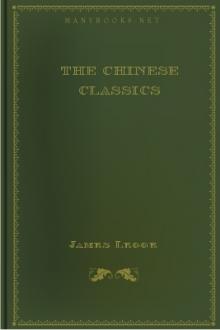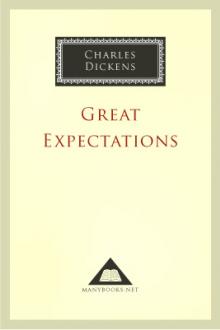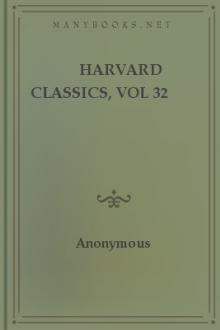The Chinese Classics (Prolegomena) by James Legge (e novels to read .txt) 📕

- Author: James Legge
- Performer: -
Book online «The Chinese Classics (Prolegomena) by James Legge (e novels to read .txt) 📕». Author James Legge
Very shortly after, five of the great ministers of the Government of Wei, Sun Yung, Chang Ch’ung, Tsao Hsi, Hsun K’ai, and Ho Yen [6], united in the production of one great Work, entitled, ‘A Collection of Explanations of the Lun Yu [7].’ It embodied the labors of all the writers which have been mentioned, and, having been frequently reprinted by succeeding dynasties, it still remains. The preface of the five compilers, in the form of a memorial to the emperor, so called, of the House of Wei, is published with it, and has been of much assistance to me in writing these sections. Ho
1 �]�w.
2 ���Z.
3 �P��.
4 ��������, �n�p���u, ����, �������V��.
5 �q�A, ���s; ���`, ����; ���h, �P���C.
6 ���S�j��, �����J, �]�o; ���S�j��, �G�R; ���M�`��, �����x, �w�m�F�J, �� ��; ����, ����; �|��, �t�����L, �����J, ����.
7 ���y����. I possess a copy of this work, printed about the middle of our fourteenth century.
Yen was the leader among them, and the work is commonly quoted as if it were the production of him alone.
3. From Ho Yen downwards, there has hardly been a dynasty which has not contributed its laborers to the illustration of the Analects. In the Liang, which occupied the throne a good part of the sixth century, there appeared the ‘Comments of Hwang K’an [1],’ who to the seven authorities cited by Ho Yen added other thirteen, being scholars who had deserved well of the Classic during the intermediate time. Passing over other dynasties, we come to the Sung, A.D. 960-1279. An edition of the Classics was published by imperial authority, about the beginning of the eleventh century, with the title of ‘The Correct Meaning.’ The principal scholar engaged in the undertaking was Hsing P’ing [2]. The portion of it on the Analects [3] is commonly reprinted in ‘The Thirteen Classics,’ after Ho Yen’s explanations. But the names of the Sung dynasty are all thrown into the shade by that of Chu Hsi, than whom China has not produced a greater scholar. He composed, or his disciples complied, in the twelfth century, three Works on the Analects:— the first called ‘Collected Meanings [4];’ the second, ‘Collected Comments [5];’ and the third, ‘Queries [6].’ Nothing could exceed the grace and clearness of his style, and the influence which he has exerted on the literature of China has been almost despotic.
The scholars of the present dynasty, however, seem inclined to question the correctness of his views and interpretations of the Classics, and the chief place among them is due to Mao Ch’i-ling [7], known by the local name of Hsi-ho [8]. His writings, under the name of ‘The Collected Works of Hsi-ho [9],’ have been published in eighty volumes, containing between three and four hundred books or sections. He has nine treatises on the Four Books, or parts of them, and deserves to take rank with Chang Hsuan and Chu Hsi at the head of Chinese scholars, though he is a vehement opponent of the latter. Most of his writings are to be found also in the great Work called ‘A Collection of Works on the Classics, under the Imperial dynasty of Ch’ing [10],’ which contains 1400 sections, and is a noble contribution by the scholars of the present dynasty to the illustration of its ancient literature.
1 �������y��.
2 ����.
3 ���y���q.
4 ���y���q.
5 ���y����.
6 ���y����.
7 ���_��.
8 ���e.
9 ���e����.
10 ���M�g��.
SECTION IV. OF VARIOUS READINGS.
In ‘The Collection of Supplementary Observations on the Four Books [1],’ the second chapter contains a general view of commentaries on the Analects, and from it I extract the following list of various readings of the text found in the comments of Chang Hsuan, and referred to in the first section of this chapter.
Book II. i, �� for �@; viii, �� for �W; xix, �� for ��; xxiii. 1, �Q�@�i��, without �], for �Q�@�i���]. Book III. vii, in the clause ���]�g�G, he makes a full stop at �]; xxi. 1, �D for ��. Book IV. x, �� for �A, and �} for ��. Book V. xxi, he puts a full stop at �l. Book VI. vii, he has not the characters �h�^. Book VII. iv, �� for �P; xxxiv, �l�e simply, for �l�e�f. Book IX. ix, �� for ��. Book XI. xxv. 7, �� for ��, and �X for �k. Book XIII. iii. 3, �_�� for ��; xviii. 1, �} for �`. Book XIV. xxxi, �� for ��; xxxiv. 1, ���O�������P for �����O�������P. Book XV. i. a, �^ for ��. Book XVI. i. 13, �� for ��. Book XVII. i, �X for �k; xxiv. 2, �� for �u. Book XVIII. iv, �X for �k; viii. 1, �� for ��.
These various readings are exceedingly few, and in themselves insignificant. The student who wishes to pursue this subject at length, is provided with the means in the Work of Ti Chiao-shau [2], expressly devoted to it. It forms sections 449—
473 of the Works of the Classics, mentioned at the close of the preceding section. A still more comprehensive work of the same kind is, ‘The Examination of the Text of the Classics and of Commentaries on them,’ published under the superintendence of Yuan Yuan, forming chapters 818 to 1054 of the same Collection. Chapters 1016 to 1030 are occupied with the Lun yu; see the reference to Yuan Yuan farther on, on p. 132.
1 �|�����l��. Published in 1798. The author was a Tsao Yin-ku — ���G��.
2 �C����, �|������.
CHAPTER III. OF THE GREAT LEARNING.
SECTION I. HISTORY OF THE TEXT, AND THE DIFFERENT ARRANGEMENTS OF IT WHICH HAVE BEEN PROPOSED.
1. It has already been mentioned that ‘The Great Learning’ frms one of the Books of the Li Chi, or ‘Record of Rites,’ the formation of the text of which will be treated of in its proper place. I will only say here, that the Records of Rites had suffered much more, after the death of Confucius, than the other ancient Classics which were supposed to have been collected and digested by him. They were in a more dilapidated condition at the time of the revivial of the ancient literature under the Han dynasty, and were then published in three collections, only one of which — the Record of Rites — retains its place among the five Ching.
The Record of Rites consists, according to the ordinary arrangement, of forty-nine Chapters or Books. Liu Hsiang (see ch. I. sect. II. 2) took the lead in its formation, and was followed by the two famous scholars, Tai Teh [1], and his relative, Tai Shang [2]. The first of these reduced upwards of 200 chapters, collected by Hsiang, to eighty-nine, and Shang reduced these again to forty-six. The three other Books were added in the second century of our era, the Great Learning being one of them, by Ma Yung, mentioned in the last chapter, section III.2. Since his time, the Work has not received any further additions.
2. In his note appended to what he calls the chapter of ‘Classical Text,’ Chu Hsi says that the tablets of the ‘old copies’ of the rest of the Great Learning were considerably out of order. By those old copies, he intends the Work of Chang Hsuan, who published his commentary on the Classic, soon after it was completed by the additions of Ma Yung; and t is possible that the tablets were in confusion, and had not been arranged with sufficient care; but such a thing does not appear to have been suspected until the
1 ���w
2 ���t Shang was a second cousin of Teh.
twelfth century, nor can any evidence from ancient monuments be adduced in its support.
I have related how the ancient Classics were cut on slabs of stone by imperial order, A.D. 175, the text being that which the various literati had determined, and which had been adopted by Chang Hsuan. The same work was performed about seventy years later, under the so-called dynasty of Wei, between the years 240 and 248, and the two sets of slabs were set up together. The only difference between them was, that whereas the Classics had been cut in the first instance only in one form, the characters in the slabs of Wei were in three different forms. Amd the changes of dynasties, the slabs both of Han and Wei had perished, or nearly so, before the rise of the T’ang dynasty, A.D. 624; but under one of its emperors, in the year 836, a copy of the Classics was again cut on stone, though only in one form of the character. These slabs we can trace down through the Sung dynasty, when they were known as the tablets of Shen [1]. They were in exact conformity with the text of the Classics adopted by Chang Hsuan in his commentaries; and they exist at the present day at the city of Hsi-an, Shen-hsi, still called by the same name.
The Sung dynasty did not accomplish a similar work itself, nor did either of the two which followed it think it necessary to engrave in stone in this way the ancient Classics. About the middle of the sixteenth century, however, the literary world in China was startled by a reprt that the slabs of Wei which contained the Great Learning had been discovered. But this was nothing more than the result f an impudent attempt at an imposition, for which it is difficult to a foreigner to assign any adequate cause. The treatise, as printed from these slabs, has some trifling additions, and many alterations in the order of the text, but differing from the arrangements proposed by Chu Hsi, and by other scholars. There seems to be now no difference of opinion among Chinese critics that the whole affair was a forgery. The text of the Great Learning, as it appears in the Record of Rites with the commentary of Chang Hsuan, and was thrice engraved on stone, in three different dynasties, is, no doubt, that which was edited in the Han dynasty by Ma Yung.
3. I have said, that it is possible that the tablets containing the
1 �E�O.
text were not arranged with sufficient care by him; and indeed, any one who studies the treatise attentively, will probably come to the conclusion that the part of it forming the first six chapters of commentary in the present Work is but a fragment. It would not be a difficult task to propose an arrangement of the text different from any which I have yet seen; but such an undertaking would not be interesting out of China. My object here is simply to mention the Chinese scholars wh have rendered themselves famous or notorious in their own country by what they hav done in this way. The





Comments (0)